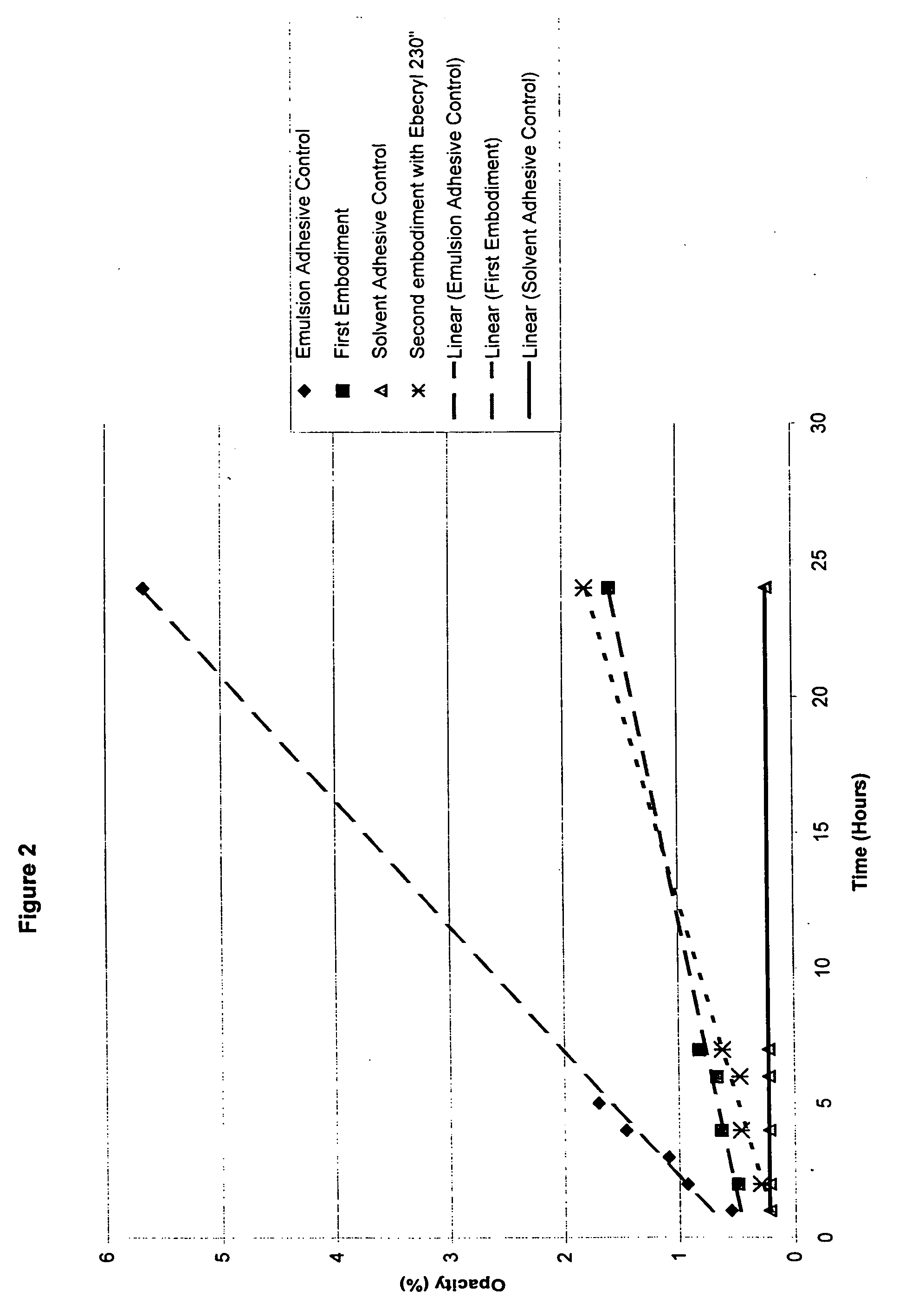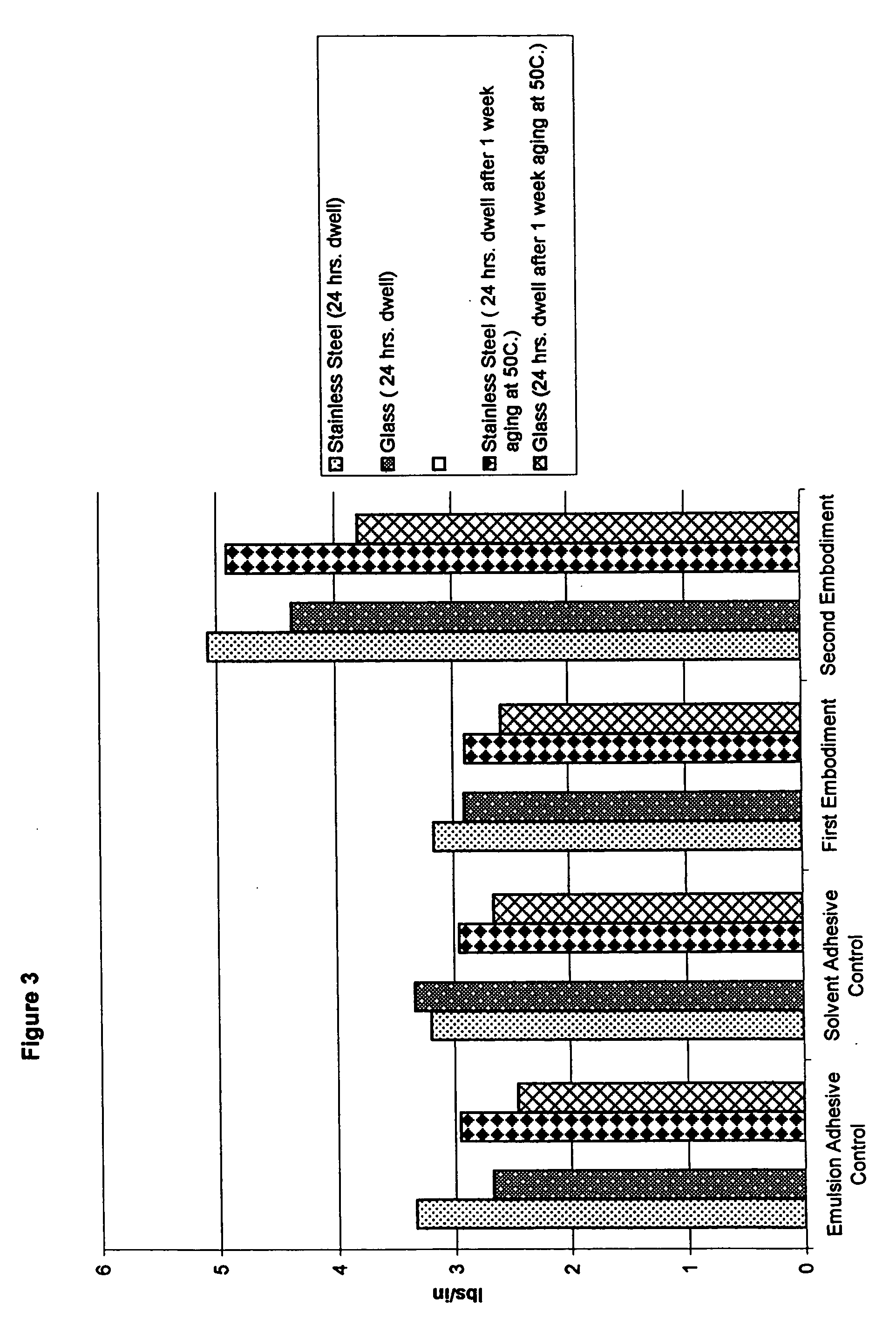Water-whitening resistant pressure-sensitive adhesive
a pressure-sensitive adhesive, water-whitening technology, applied in the direction of adhesive types, emulsion paints, coatings, etc., can solve the problems of water-whitening, film cast from emulsion-based pressure-sensitive adhesives, and whitening, and achieve the effect of increasing the resistance ability of pressure-sensitive adhesives
- Summary
- Abstract
- Description
- Claims
- Application Information
AI Technical Summary
Benefits of technology
Problems solved by technology
Method used
Image
Examples
example 1
[0069] Emulsion copolymers were prepared by sequential polymerization using the components present in Table 1, according to the following protocol.
[0070] Soap solutions B(1) and B(2), monomer charges C(1) and C(2), and catalyst charge D were prepared in separate vessels. Pre-emulsions I and II were separately formed by combining soap solution B(1) with monomer charge C(1), and combining soap solution B(2) with monomer charge C(2). A jacketed, multi-neck reactor equipped with nitrogen inlet valve stirrer and thermometer was charged with initial reactor charge A without the potassium persulfate, the reactor atmosphere was purged with nitrogen, and the contents of the reactor were heated to 78° C., with agitation at about 130 to 150 μm. When the reactor temperature reached 78° C., the potassium persulfate from the initial reactor charge A was added and the purging of the reactor atmosphere with nitrogen was stopped. Pre-emulsion I was then fed into the reactor over time, with agitatio...
example 2
[0073] Emulsion copolymers were prepared by sequential polymerization using the components present in Table 2, according to the following protocol.
[0074] Soap solutions B(1) and B(2), monomer charges C(1) and C(2), and catalyst charge D were prepared in separate vessels. Pre-emulsions I and II were separately formed by combining soap solution B(1) with monomer charge C(1), and combining soap solution B(2) with monomer charge C(2). A jacketed, multi-neck reactor equipped with nitrogen inlet valve stirrer and thermometer was charged with initial reactor charge A without the potassium persulfate, the reactor atmosphere was purged with nitrogen, and the contents of the reactor were heated to 78° C., with agitation at about 150 rpm. When the reactor temperature reached 78° C., the potassium persulfate from the initial reactor charge A was added and the purging of the reactor atmosphere with nitrogen was stopped. Pre-emulsion I was then fed into the reactor over time, with agitation. Cat...
PUM
| Property | Measurement | Unit |
|---|---|---|
| glass transition temperature | aaaaa | aaaaa |
| glass transition temperature | aaaaa | aaaaa |
| Tg | aaaaa | aaaaa |
Abstract
Description
Claims
Application Information
 Login to View More
Login to View More - R&D
- Intellectual Property
- Life Sciences
- Materials
- Tech Scout
- Unparalleled Data Quality
- Higher Quality Content
- 60% Fewer Hallucinations
Browse by: Latest US Patents, China's latest patents, Technical Efficacy Thesaurus, Application Domain, Technology Topic, Popular Technical Reports.
© 2025 PatSnap. All rights reserved.Legal|Privacy policy|Modern Slavery Act Transparency Statement|Sitemap|About US| Contact US: help@patsnap.com



